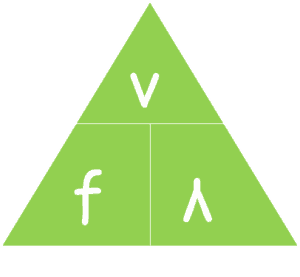Untitled
0.0(0)
0.0(0)
Card Sorting
1/35
Earn XP
Description and Tags
Study Analytics
Name | Mastery | Learn | Test | Matching | Spaced |
|---|
No study sessions yet.
36 Terms
1
New cards
Amplitude
________- distance from center to crest trough.
2
New cards
Microwaves
________- easily absorbed by water (radar, cell phone)
3
New cards
Gamma
________ rays- generated from nuclear reactions (stars, bombs)
4
New cards
wavelength
Parts of a wave that is measurable: ________, amplitude, wave speed, period, and frequency.
5
New cards
Waves
________- repeated motion /vibrations that travel through a medium.
6
New cards
Medium
________- material the wave travels through.
7
New cards
Light waves
________- don't require a medium, travels fastest in a vacuum.
8
New cards
X rays
________- imaging bones, radiotherapy.
9
New cards
Visible Light
________- only part of spectrum you see.
10
New cards
Wavelength
lamida
11
New cards
Parts of a wave that is measurable
wavelength, amplitude, wave speed, period, and frequency
12
New cards
Mechanical waves
requires a medium (sound, water)
13
New cards
Radio waves
emitted by radio stations and stars
14
New cards
Microwaves
easily absorbed by water (radar, cell phone)
15
New cards
Infrared
"below red," associated with heat (night vision, weather forecasting)
16
New cards
Visible Light
only part of spectrum you see
17
New cards
Ultraviolet waves
"beyond violet" (kills viruses, lowers sunburns)
18
New cards
X-rays
imaging bones, radiotherapy
19
New cards
Gamma rays
generated from nuclear reactions (stars, bombs)
20
New cards
Light waves
don't require a medium, travels fastest in a vacuum
21
New cards
Speed of light
3.00x10^8 m/s
22
New cards
Medium
material the wave travels through
23
New cards
Transverse waves
moves perpendicular to the direction of travel
24
New cards
Crest
top of the wave
25
New cards
Trough
bottom of the wave
26
New cards
Amplitude
distance from center to crest or trough
27
New cards
Compress zone
particles close together
28
New cards
Period (T)
time it takes for one length to pass (units = s)
29
New cards
Frequency (F)
number of waves that pass each second
30
New cards
Hertz (Hz)
1 Hz = 1 wave per second
31
New cards
Equation for Wave Speed
Speed = frequency x wavelength
32
New cards
Waves are in phase
amplitudes add together
33
New cards
Superposition
combining of waves
34
New cards
Kilo
x10 to the 3
35
New cards
Mega
x10 to the 6
36
New cards
frequency
